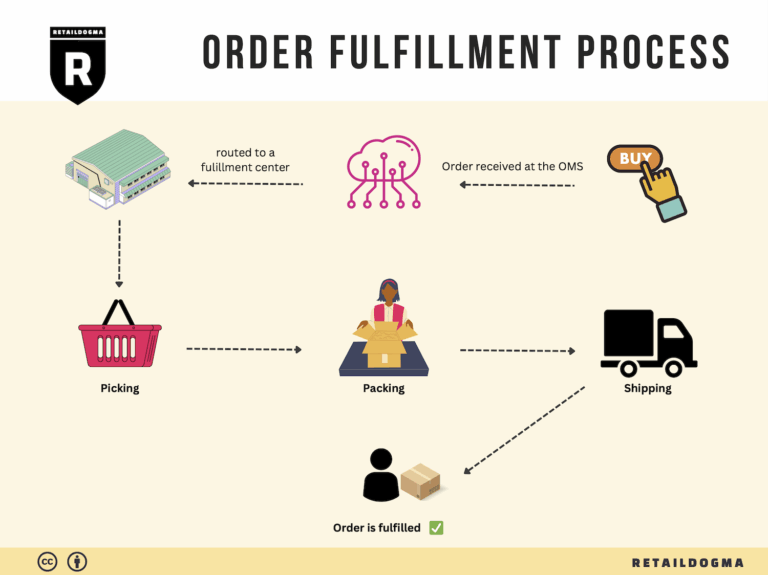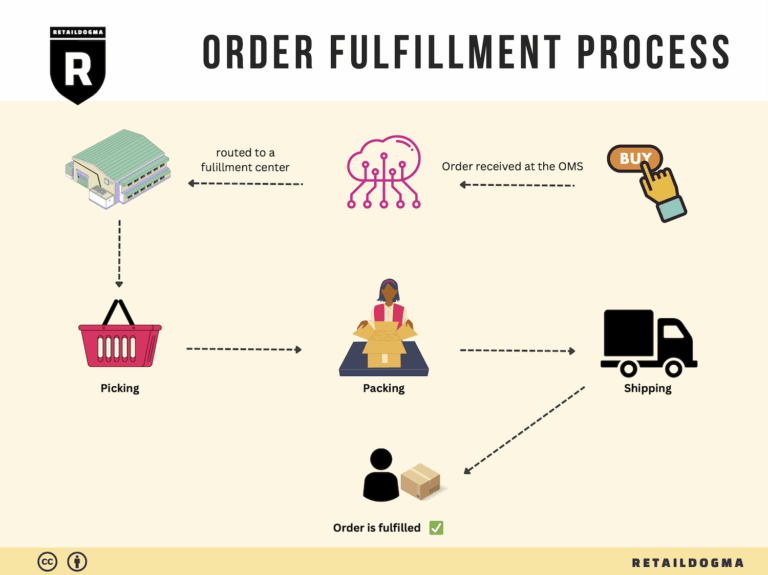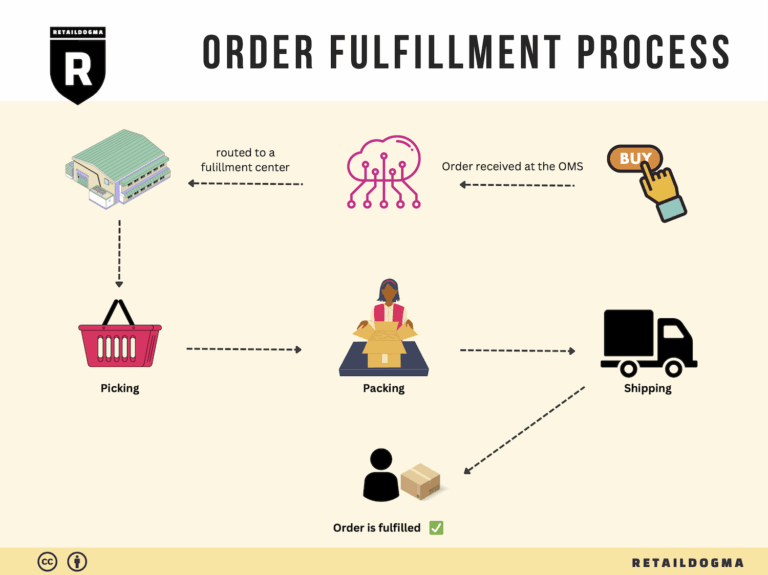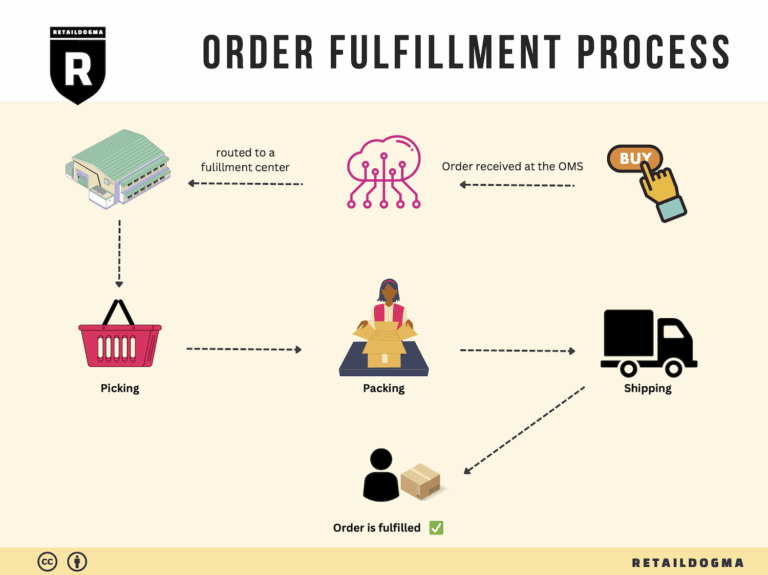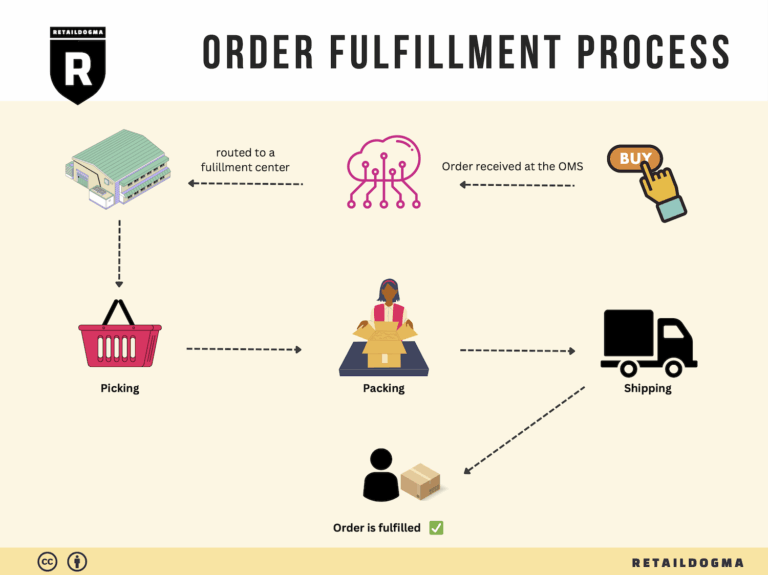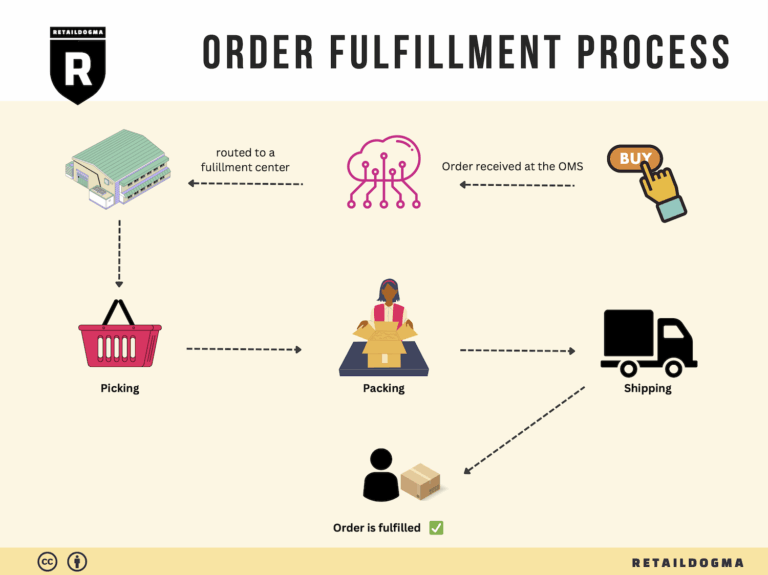How Order Fulfillment Works: A Step-by-Step Guide for Businesses
What is E-commerce Fulfillment? An Introduction for Growing Businesses
Growing an e-commerce business is an exciting venture, but it often comes with its share of challenges. One of the most common pain points for online sellers is the overwhelming task of packing and shipping orders. As sales increase, so do the demands of fulfilling customer orders, which can quickly lead to operational bottlenecks, errors in inventory management, and dissatisfaction among customers.
Understanding E-commerce Fulfillment
At its core, e-commerce fulfillment is the process of getting a product from your warehouse to the customer’s doorstep. This involves several key stages, including inventory management, order processing, picking and packing items, shipping, and handling returns. For many growing businesses, managing these tasks in-house can become cumbersome and distract from focusing on core business activities like marketing and product development.
In this guide, we will explore various fulfillment models that can ease these burdens and support your growth. We will delve into third-party logistics (3PL) providers, which offer a comprehensive solution for warehousing, packing, and shipping. We will also discuss Fulfillment by Amazon (FBA), a popular choice among sellers looking to leverage Amazon’s extensive logistics network.
Core Services of Fulfillment
Understanding the core services provided by fulfillment partners is essential for making informed decisions. These services often include:
- Inventory Management: Keeping track of stock levels to prevent shortages or overstock situations.
- Pick and Pack: Efficiently selecting products from inventory and preparing them for shipment.
- Shipping: Choosing the best carriers to ensure timely delivery at competitive rates.
- Returns Processing: Managing the return of products smoothly to maintain customer satisfaction.
Choosing the Right Fulfillment Partner
Selecting the right fulfillment partner can significantly impact your business’s efficiency and customer satisfaction. This guide will outline key considerations for evaluating potential partners, including their technology capabilities, customer service reputation, and pricing structures.
Pricing Considerations
Understanding how fulfillment services are priced is crucial for budgeting and profitability. We will break down the various pricing models and what to expect in terms of costs associated with storage, shipping, and additional services.
Empowering Your Business Decisions
Ultimately, this guide aims to empower e-commerce business owners and operations managers to make informed decisions about their logistics strategies. By understanding the nuances of e-commerce fulfillment and evaluating your options, you can streamline your operations, enhance customer satisfaction, and scale your business efficiently.
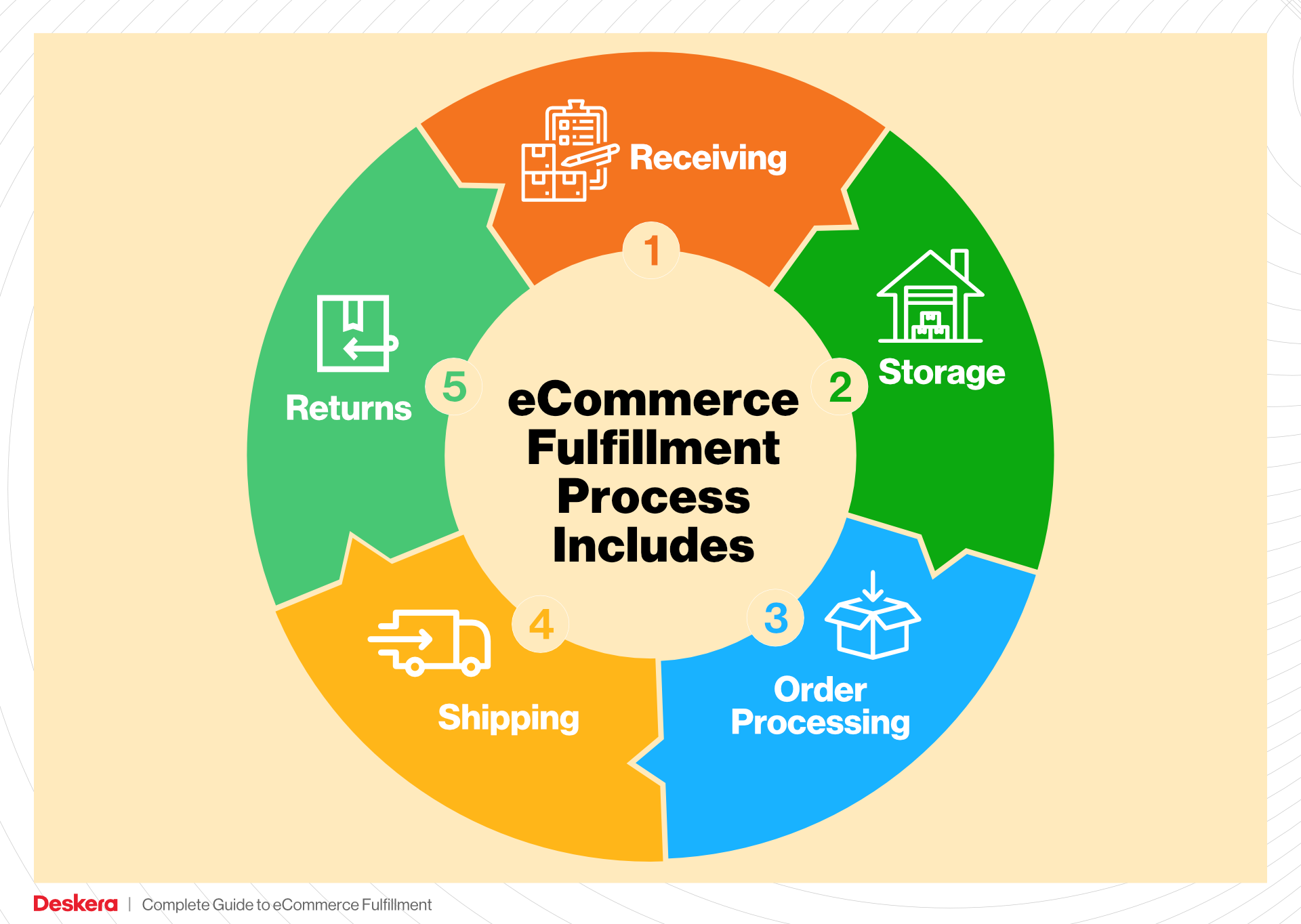
What You’ll Learn In This Guide
- What is E-commerce Fulfillment? An Introduction for Growing Businesses
- The Order Fulfillment Process: From ‘Buy’ Button to Customer’s Door
- Comparing Fulfillment Models: In-House vs. 3PL vs. Dropshipping
- A Deep Dive into Amazon FBA: Pros, Cons, and Who It’s For
- Core Services Offered by Fulfillment Centers
- How to Choose a Fulfillment Partner: A 6-Point Checklist
- Understanding Fulfillment Pricing: A Breakdown of Common Fees
- Frequently Asked Questions (FAQs) about Fulfillment
- Conclusion: Is Outsourcing Fulfillment the Right Move for Your Business?
- Important Disclaimer
The Order Fulfillment Process: From ‘Buy’ Button to Customer’s Door
1. Receiving Inventory
The first step in the order fulfillment process is receiving inventory. This involves accepting shipments from suppliers and ensuring that the products match the purchase orders. Upon arrival, items are checked for quantity and quality, with discrepancies noted for further action. This stage is crucial because it establishes the accuracy of your inventory levels and ensures that you have the right products available for future orders. A key term associated with this step is SKU (Stock Keeping Unit), which is a unique identifier for each product variant. By accurately tracking SKUs, businesses can maintain an organized inventory system, which is essential for effective order processing and customer satisfaction.
2. Warehouse Storage
Once the inventory has been received and verified, it moves to warehouse storage. In this phase, products are strategically organized within the fulfillment center. Efficient storage solutions, such as using shelving units or bins, help maximize space and facilitate easy access to items. This step is important because well-organized storage reduces the time spent locating products during the picking process, ultimately speeding up order fulfillment. A key term here is ABC analysis, a method used to categorize inventory based on importance and sales volume. This categorization helps prioritize storage locations, ensuring that high-demand items are readily accessible, thereby improving operational efficiency.
3. Order Picking
The next step is order picking, where the warehouse team retrieves products from storage based on customer orders. This process often utilizes a pick list, a document that outlines the items and quantities needed for each order. Efficient picking is vital because it directly impacts order accuracy and speed. There are various picking methods, including single order picking, batch picking, and zone picking, each suited to different business models and order volumes. By employing the right picking strategy, businesses can significantly reduce the time taken to prepare orders, leading to quicker delivery times and enhanced customer satisfaction.
4. Order Packing
After picking, the items are moved to the packing station, where they are prepared for shipment. This stage involves organizing the products, selecting appropriate packaging materials, and ensuring that items are securely packed to prevent damage during transit. The importance of packing cannot be overstated, as it not only protects the products but also plays a role in the overall customer experience. A key term related to this step is dimensional weight pricing, a shipping method that factors in the size of the package when determining shipping costs. Understanding this concept can help businesses optimize their packaging choices to reduce shipping expenses while maintaining product safety.
5. Shipping & Delivery
The final step in the order fulfillment process is shipping and delivery. Once the order is packed, it is labeled and handed off to a carrier for delivery to the customer. This stage is critical, as timely delivery can significantly affect customer satisfaction and retention rates. Businesses must choose reliable shipping partners and understand the various shipping options available, including standard and expedited services. A key term in this phase is last-mile delivery, which refers to the final leg of the delivery journey from the distribution center to the customer’s doorstep. By optimizing last-mile delivery logistics, companies can enhance their service levels and ensure that customers receive their orders promptly and in good condition.
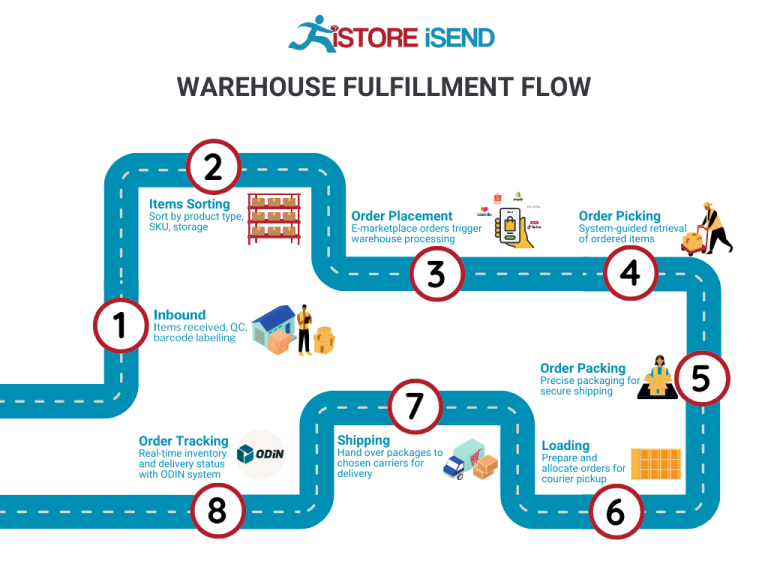
In summary, the order fulfillment process is a multi-step journey that starts with receiving inventory and ends with delivering products to customers. Each step plays a vital role in ensuring that orders are processed efficiently and accurately. By understanding and optimizing each phase, e-commerce businesses can scale their operations effectively, improve customer satisfaction, and ultimately drive growth.
Comparing Fulfillment Models: In-House vs. 3PL vs. Dropshipping
Fulfillment Model Comparison Table
| Model | Who Handles Inventory | Best For (Business Stage) | Key Advantage | Key Disadvantage |
|---|---|---|---|---|
| In-House Fulfillment | Business Owner/Team | Established businesses | Complete control over inventory | High operational costs and complexity |
| Third-Party Logistics (3PL) | 3PL Provider | Startups to mid-sized businesses | Scalable solutions with lower overhead | Less control over fulfillment process |
| Dropshipping | Supplier/Manufacturer | New businesses and entrepreneurs | Low upfront investment and risk | Lower profit margins and longer shipping times |
In-House Fulfillment
In-house fulfillment involves managing your own inventory, warehousing, and shipping processes. This model is best suited for established businesses that have the resources to handle logistics internally. The key advantage of in-house fulfillment is the complete control it offers over inventory management, order processing, and customer experience. Businesses can tailor their fulfillment processes to align closely with their brand and customer service standards. However, this approach comes with significant challenges, including high operational costs, the need for a dedicated team, and the complexities of managing logistics, especially as order volumes increase. Additionally, businesses must invest in warehousing space, technology, and shipping solutions, which can strain resources and divert focus from core business activities.
Third-Party Logistics (3PL)
Third-party logistics (3PL) providers offer a flexible and scalable alternative to in-house fulfillment. By outsourcing logistics to a specialized provider, businesses can benefit from lower operational overhead and access to advanced technology and expertise in supply chain management. This model is particularly advantageous for startups and mid-sized businesses that may not have the resources to manage fulfillment efficiently. 3PL providers typically handle warehousing, inventory management, order processing, and shipping, allowing businesses to focus on sales and growth. Additionally, many 3PLs offer integration with popular e-commerce platforms, making it easy to synchronize inventory and order data. However, one of the main drawbacks of using a 3PL is the potential loss of control over the fulfillment process. Businesses may face challenges in maintaining brand consistency and customer service standards, especially if communication with the 3PL is not seamless.
Dropshipping
Dropshipping is a fulfillment model where businesses sell products without holding any inventory. Instead, when a customer places an order, the business purchases the item from a supplier who then ships it directly to the customer. This model is particularly appealing to new businesses and entrepreneurs, as it requires minimal upfront investment and reduces financial risk. With dropshipping, entrepreneurs can test new products without the burden of inventory costs and can quickly pivot based on market demand. However, there are significant downsides to consider. Profit margins are typically lower than in other fulfillment models due to reliance on suppliers, and shipping times may be longer, which can lead to customer dissatisfaction. Additionally, businesses have limited control over product quality and inventory levels, which can complicate customer service and brand reputation. As a result, while dropshipping can be a low-risk entry point into e-commerce, it requires careful supplier selection and management to ensure a positive customer experience.
In conclusion, choosing the right fulfillment model depends on your business stage, operational capacity, and long-term goals. Each model has its unique advantages and challenges, and understanding these can help you make an informed decision that aligns with your overall strategy for growth and customer satisfaction.
A Deep Dive into Amazon FBA: Pros, Cons, and Who It’s For
Understanding Fulfillment by Amazon (FBA)
Fulfillment by Amazon (FBA) is a service that allows e-commerce sellers to store their products in Amazon’s fulfillment centers. Amazon takes care of storage, packaging, shipping, and customer service for these products, enabling sellers to leverage Amazon’s extensive logistics network and customer base. This service has become increasingly popular among small to medium-sized businesses looking to scale their operations without the burden of managing their own fulfillment processes.
How FBA Works
-
Account Setup: Sellers create an Amazon seller account and enroll in FBA. This includes selecting the products they want to fulfill through Amazon.
-
Inventory Shipment: Sellers send their inventory to Amazon’s fulfillment centers. Amazon provides guidelines on how to package and label products to ensure they meet their standards.
-
Storage and Management: Once received, Amazon stores the products in their warehouses. Sellers can track their inventory through the Amazon Seller Central dashboard.
-
Order Processing: When a customer places an order for a product fulfilled by FBA, Amazon handles the picking, packing, and shipping of the item. They also manage shipping notifications and tracking information.
-
Customer Service and Returns: Amazon manages customer service inquiries and handles returns on behalf of the seller, ensuring a seamless experience for customers.
Pros of FBA
-
Prime Eligibility: Products fulfilled by Amazon automatically become eligible for Amazon Prime. This can significantly boost sales, as Prime members tend to prefer products with fast, free shipping.
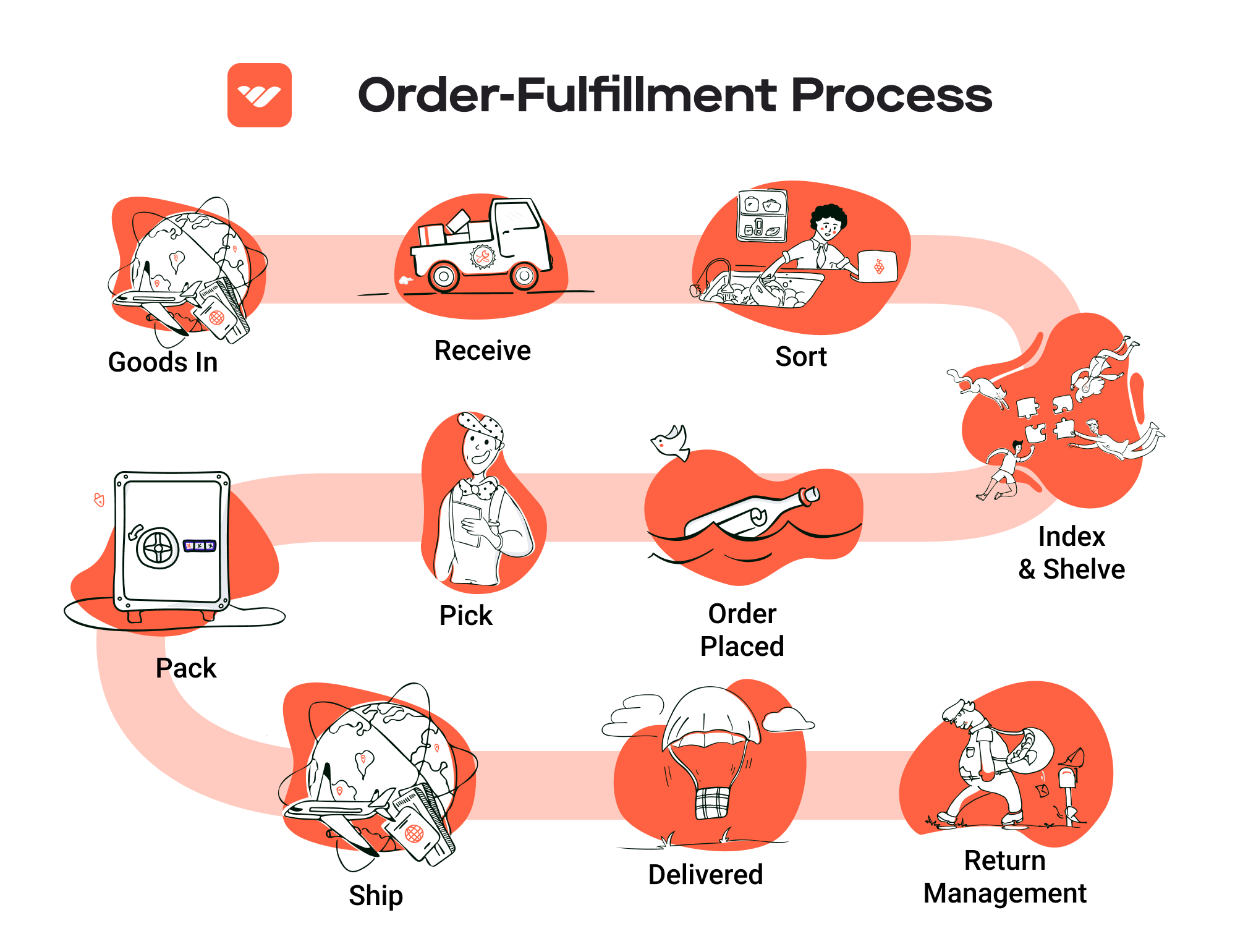
-
Customer Trust: Amazon is a well-established brand that customers trust. Having your products fulfilled by Amazon can enhance credibility and increase conversion rates.
-
Multi-Channel Fulfillment: FBA allows sellers to use Amazon’s logistics for orders placed on other platforms, such as their own websites or eBay. This can streamline operations and reduce shipping costs.
-
Efficient Logistics: Amazon’s vast network of fulfillment centers ensures quick delivery times, which is crucial in today’s fast-paced e-commerce environment.
-
Time Savings: By outsourcing fulfillment to Amazon, sellers can focus on other critical aspects of their business, such as marketing and product development.
Cons of FBA
-
High Fees: FBA fees can be substantial, including storage fees and fulfillment fees. These costs can eat into profit margins, particularly for low-cost items or products with lower sales volumes.
-
Strict Inventory Rules: Amazon enforces strict guidelines regarding inventory management, labeling, and packaging. Non-compliance can lead to additional fees or even removal of inventory.
-
Commingling Risks: FBA commingles inventory from different sellers, which can lead to issues if products are damaged or misrepresented. This could result in customer complaints or negative reviews.
-
Limited Control: By using FBA, sellers relinquish some control over how their products are packaged and shipped, which can impact branding and customer experience.
-
Complex Returns Process: While Amazon handles returns, sellers may face challenges if a product is returned in unsellable condition, leading to potential losses.
Who is FBA Best For?
FBA is particularly advantageous for:
-
Startups and Small Businesses: Companies that are just starting or have limited resources can benefit from Amazon’s extensive logistics network without the need to invest heavily in warehousing and shipping.
-
Brands Looking to Scale: Businesses ready to scale their operations can leverage FBA to handle increased order volumes without overwhelming their existing infrastructure.
-
Sellers with High Turnover Products: If you sell products with a high turnover rate, the benefits of FBA can outweigh the costs, as quick shipping and customer trust can lead to increased sales.
-
E-commerce Entrepreneurs Focused on Growth: For entrepreneurs aiming to expand their reach and brand recognition, FBA provides a pathway to tap into Amazon’s massive customer base.
-
Multi-Channel Sellers: If you sell on multiple platforms, FBA allows you to streamline fulfillment across channels, saving time and reducing operational complexity.
In conclusion, Fulfillment by Amazon can be a powerful tool for e-commerce businesses looking to enhance their logistics and scale operations. However, it’s essential to weigh the pros and cons carefully and consider how FBA aligns with your business strategy and financial goals. Understanding these factors will empower you to make informed decisions that can drive growth and efficiency in your e-commerce endeavors.
Core Services Offered by Fulfillment Centers
Inventory Management & Warehousing
Effective inventory management and warehousing are fundamental components of a successful e-commerce operation. Fulfillment centers provide businesses with secure, organized spaces to store products, ensuring that inventory levels are maintained without the burden of long-term commitments or exorbitant fees.
What It Is
Inventory management encompasses the tracking of stock levels, orders, sales, and deliveries. Fulfillment centers utilize advanced software systems to provide real-time visibility into inventory status. This means e-commerce businesses can easily monitor stock levels, receive alerts for low inventory, and forecast future inventory needs based on sales trends. Warehousing, on the other hand, refers to the physical storage of goods until they are sold and shipped.
Benefits
For e-commerce businesses, the benefits of streamlined inventory management and warehousing are substantial. Firstly, it minimizes the risk of stockouts and overstock situations, allowing businesses to maintain optimal inventory levels. This leads to improved cash flow, as funds are not tied up in excess inventory. Additionally, secure warehousing reduces the risk of theft and damage, providing peace of mind. With no long-term storage fees, businesses can scale their operations without the financial strain that often accompanies growth.
Pick and Pack Services
Pick and pack services are critical for ensuring that orders are fulfilled accurately and efficiently. This process involves selecting the ordered items from storage (picking) and then packaging them appropriately for shipment (packing).
What It Is
In a fulfillment center, trained staff or automated systems are responsible for picking products from the warehouse based on customer orders. Once the items are gathered, they are carefully packed to ensure they arrive at their destination in perfect condition. This may include using branded packaging, protective materials, and accurate labeling.
Benefits
The primary benefit of efficient pick and pack services is the increased accuracy and speed of order fulfillment. A well-executed pick and pack operation ensures that orders are shipped correctly, reducing the likelihood of returns due to errors. Fast processing times enhance customer satisfaction, as orders are delivered quickly. Moreover, when fulfillment centers utilize technology to streamline this process, businesses can scale their operations easily, handling increased order volumes during peak seasons without sacrificing quality.
Kitting and Assembly
Kitting and assembly services involve grouping individual items together to create a single, bundled product. This service is particularly beneficial for businesses that sell products that are often purchased together or require assembly before sale.
What It Is
Kitting involves the assembly of various components into a single kit, which can be sold as a packaged product. This might include items like gift sets, subscription boxes, or products that require assembly, such as furniture or DIY kits. Fulfillment centers have the resources to handle these tasks efficiently, often including labeling and packaging as part of the service.
Benefits
The benefits of kitting and assembly are multifaceted. By offering bundled products, businesses can increase their average order value and provide customers with a convenient shopping experience. This service also saves time and labor for e-commerce businesses, as fulfillment centers can handle the complexities of assembly and packaging. Additionally, it allows for improved inventory management, as multiple components can be tracked and assembled as needed, reducing the risk of excess stock.
Returns Management (Reverse Logistics)
Returns management, or reverse logistics, is a crucial aspect of e-commerce fulfillment that deals with the return of products from customers back to the seller or fulfillment center. Given the high rate of returns in the e-commerce sector, efficient returns management is essential.
What It Is
Returns management encompasses the processes involved in handling returned products, including receiving, inspecting, restocking, and processing refunds or exchanges. Fulfillment centers often provide comprehensive returns management services to streamline this process for e-commerce businesses.
Benefits
The benefits of effective returns management are significant. A well-structured returns process enhances customer satisfaction, as it simplifies the return experience for consumers. By efficiently processing returns, businesses can quickly restock items and make them available for resale, thereby minimizing losses. Furthermore, effective returns management can provide valuable insights into product performance and customer preferences, informing future inventory and product decisions. Overall, it helps maintain a positive brand reputation, fostering customer loyalty even in the face of returns.
In summary, partnering with a fulfillment center that offers robust inventory management, pick and pack services, kitting and assembly, and returns management can significantly enhance an e-commerce business’s operational efficiency, customer satisfaction, and overall growth potential. As these centers handle the complexities of logistics, e-commerce businesses can focus on scaling their sales and refining their marketing strategies.
How to Choose a Fulfillment Partner: A 6-Point Checklist
Location & Warehouse Network
Choosing a fulfillment partner with the right location and warehouse network is crucial for optimizing shipping times and costs. The proximity of warehouses to your customer base can significantly impact delivery speed and shipping rates.
Why It Matters:
– Faster shipping times enhance customer satisfaction.
– Reduced shipping costs can improve your profit margins.
– A diverse warehouse network helps manage inventory effectively across different regions.
Questions to Ask:
– Where are your warehouses located, and how do you determine optimal placement?
– Do you have the capacity to expand your network if my business grows?
– Can you provide shipping times and costs based on different regions?
Technology & Integrations
In today’s e-commerce landscape, having a robust technological backbone is essential for seamless operations. Your fulfillment partner should offer advanced technology solutions that integrate smoothly with your existing platforms.
Why It Matters:
– Efficient technology leads to better inventory management and order tracking.
– Integration with your e-commerce platform reduces manual work and errors.
– Real-time data access allows for informed decision-making.
Questions to Ask:
– What inventory management system do you use, and how does it integrate with popular e-commerce platforms?
– Can you provide real-time tracking and reporting capabilities?
– How often do you update your technology, and what support do you offer for integrations?
Specializations (e.g., Cold Storage, Oversized Items)
Different e-commerce businesses have unique needs, and not all fulfillment partners can handle specialized items. Whether you sell perishable goods, oversized items, or require kitting services, it’s essential to find a partner who can accommodate these needs.
Why It Matters:
– Specialized services ensure compliance with industry regulations (e.g., food safety).
– Proper handling of unique items prevents damage and reduces returns.
– Tailored services can enhance customer experience and brand loyalty.
Questions to Ask:
– What types of specialized fulfillment services do you offer?
– How do you handle compliance for specialized items (e.g., temperature control for food)?
– Can you provide examples of how you’ve successfully managed specialized inventory for other clients?
Scalability & Capacity
As your business grows, your fulfillment needs will evolve. It’s vital to partner with a fulfillment provider that can scale alongside your business, whether through increased order volume or expanded service offerings.
Why It Matters:
– A scalable partner prevents disruptions in service as your business grows.
– Flexibility in capacity allows you to handle peak seasons (e.g., holidays) without incurring penalties.
– A partner with a proven track record of scaling can help you avoid costly transitions.
Questions to Ask:
– How do you handle fluctuations in order volume during peak seasons?
– What is your capacity for growth, and how quickly can you scale up services?
– Can you provide case studies or references from clients who have successfully scaled with you?
Pricing and Contracts
Understanding the pricing structure and contract terms is essential to avoid hidden fees and ensure that you’re getting a fair deal. Look for transparency in pricing and flexibility in contracts.
Why It Matters:
– Clear pricing helps you budget effectively and maintain profit margins.
– Flexible contracts can accommodate changes in your business model.
– Avoiding long-term commitments allows you to pivot if necessary.
Questions to Ask:
– Can you provide a detailed breakdown of your pricing structure, including any hidden fees?
– Are there any minimum order requirements or long-term contracts?
– How do you handle pricing adjustments based on changes in order volume or service needs?
Customer Support & Reviews
Exceptional customer support can make or break your experience with a fulfillment partner. Look for a provider that prioritizes customer service and has positive reviews from other clients.
Why It Matters:
– Responsive customer support can quickly resolve issues, minimizing disruptions.
– Positive reviews and testimonials are indicators of reliability and performance.
– A strong support system fosters a collaborative relationship, enhancing overall partnership success.
Questions to Ask:
– What customer support channels do you offer (e.g., phone, chat, email)?
– Can you provide references or testimonials from existing clients?
– How do you handle issues like order inaccuracies or shipping delays, and what is the typical response time?
Conclusion
Choosing the right fulfillment partner is a critical decision that can significantly impact your e-commerce business’s success. By focusing on these six key areas—Location & Warehouse Network, Technology & Integrations, Specializations, Scalability & Capacity, Pricing and Contracts, and Customer Support & Reviews—you can make an informed decision that aligns with your business goals. Conduct thorough due diligence, ask the right questions, and select a partner that not only meets your current needs but can grow with you in the future.
Understanding Fulfillment Pricing: A Breakdown of Common Fees
Initial Setup Fees
Initial setup fees are a one-time charge that fulfillment centers may impose when you start using their services. These fees typically cover the costs associated with onboarding your business, which can include account setup, software integration, and initial inventory processing.
The calculation of these fees can vary significantly from one provider to another. Some fulfillment centers offer free setup, while others may charge a flat fee that can range from a few hundred to several thousand dollars, depending on the complexity of your inventory and the specific requirements of your e-commerce platform. It’s essential to clarify what is included in this fee and whether there are any additional costs for integrating your systems.
Receiving Fees
Receiving fees are charges incurred when your inventory arrives at the fulfillment center. These fees cover the labor and resources required to unload, inspect, and store your products.
Typically, receiving fees are calculated based on the number of pallets or boxes received, or by weight. For example, a fulfillment center might charge a standard fee per pallet or a fee per hour for the staff handling the receiving process. It is crucial to ask about the criteria used for these calculations, as some providers may have minimum charges or additional fees for specific handling requirements, such as fragile items or special labeling.
Storage Fees (per pallet/bin)
Storage fees are ongoing charges for keeping your inventory in the fulfillment center’s warehouse. These fees are typically calculated on a per-pallet or per-bin basis, depending on the size and layout of your inventory.
Most fulfillment centers charge storage fees monthly, and the rates can vary based on the volume of inventory you store. For instance, a provider might charge a lower fee for bulk storage (e.g., per pallet) and a higher fee for smaller, individual bins or shelves. Some fulfillment services may also implement tiered pricing, where the rate decreases as you store larger volumes of products. Be sure to inquire about any potential long-term storage fees, especially if your inventory levels fluctuate seasonally.
Pick & Pack Fees (per item/order)
Pick and pack fees cover the labor involved in retrieving items from the warehouse, packing them for shipment, and preparing them for dispatch. These fees are generally charged per item or per order, depending on how the fulfillment center structures its pricing.
For example, a fulfillment center might charge a flat fee for each order processed, plus an additional fee for each item picked. Some providers offer tiered pricing models, where the cost per item decreases as order volumes increase. It’s essential to understand the specific pick and pack process used by your provider, including any additional charges for special packing requirements, such as custom packaging or kitting services.
Shipping Fees
Shipping fees are the costs associated with transporting your products from the fulfillment center to your customers. These fees can vary widely based on several factors, including the shipping carrier, the destination, the size and weight of the package, and the shipping speed selected.
Fulfillment centers often have partnerships with major carriers, which can help reduce shipping costs. Typically, the shipping fees are calculated based on the dimensions and weight of each package, and they may vary depending on whether you choose standard or expedited shipping options. Some fulfillment services may offer flat-rate shipping or discounted rates based on your shipping volume, so it’s worth discussing these options with potential providers.
Tips for Getting an Accurate Quote
-
Provide Detailed Information: When requesting a quote, supply as much detail as possible about your products, order volumes, and any specific requirements. This information helps fulfillment centers provide more accurate pricing.
-
Understand All Fees: Ask potential providers to break down their pricing structure, including any hidden fees, to avoid unexpected costs later on.
-
Compare Multiple Quotes: Don’t settle for the first quote you receive. Compare multiple fulfillment services to find the best fit for your business needs and budget.
-
Inquire About Discounts: Some fulfillment centers offer discounts for long-term contracts or higher volumes. Be sure to ask about any potential savings.
-
Review Terms and Conditions: Before signing a contract, thoroughly review the terms and conditions, paying close attention to any clauses related to fees, cancellation policies, and service levels.
By taking these steps, you can ensure that you receive a comprehensive and accurate quote that aligns with your business goals, helping you scale your e-commerce operations efficiently.
Frequently Asked Questions (FAQs) about Fulfillment
1. What is a fulfillment service?
A fulfillment service is a third-party logistics (3PL) provider that manages the storage, packaging, and shipping of products on behalf of e-commerce businesses. They handle the entire process from receiving inventory to delivering orders to customers, allowing businesses to focus on growth and marketing.
2. What is a 3PL?
A 3PL, or third-party logistics provider, is a company that offers logistics services to businesses, including transportation, warehousing, inventory management, and fulfillment. By outsourcing these functions to a 3PL, companies can reduce operational costs and streamline their supply chain.
3. How do fulfillment services work?
Fulfillment services operate by receiving inventory from suppliers, storing it in a warehouse, and picking, packing, and shipping orders directly to customers. Many fulfillment centers offer integrated technology solutions that connect with e-commerce platforms to automate order processing and inventory management.
4. What’s the difference between a warehouse and a fulfillment center?
A warehouse is primarily used for storage of goods, while a fulfillment center is specifically designed to process orders and ship products to customers. Fulfillment centers focus on fast order processing, packing, and shipping, often utilizing technology to enhance efficiency and accuracy.
5. How much do fulfillment services cost?
The cost of fulfillment services varies based on factors such as order volume, storage space, shipping methods, and additional services like kitting or returns management. Most providers offer a pricing structure that includes storage fees, pick-and-pack fees, and shipping costs. It’s best to request quotes from multiple providers to compare pricing.
6. What are the benefits of using a fulfillment service?
Utilizing a fulfillment service can lead to reduced shipping costs, faster order processing, improved inventory management, and enhanced customer satisfaction. It allows businesses to scale operations without the need for significant investment in warehousing or logistics infrastructure.
7. Can I integrate my e-commerce platform with a fulfillment service?
Yes, most fulfillment services offer integration with popular e-commerce platforms and shopping carts. This integration enables real-time inventory updates, order processing, and tracking information, providing a seamless experience for both businesses and customers.
8. What types of businesses can benefit from fulfillment services?
Fulfillment services are beneficial for a wide range of businesses, including startups, small to medium-sized enterprises, and larger corporations. E-commerce sellers across various industries—such as retail, apparel, consumer goods, and subscription boxes—can leverage fulfillment services to streamline their logistics operations.
9. How do I choose the right fulfillment service provider?
When selecting a fulfillment service provider, consider factors such as their experience, technology capabilities, customer service, pricing structure, and the range of services offered. Additionally, review customer testimonials and case studies to gauge their reliability and performance.
10. What happens if there’s an issue with my order fulfillment?
Most fulfillment service providers have dedicated customer support teams to address any issues that arise during the fulfillment process. This may include delays, damaged goods, or incorrect orders. It’s important to choose a provider that offers transparent communication and proactive problem-solving to ensure a smooth experience.
Conclusion: Is Outsourcing Fulfillment the Right Move for Your Business?
Evaluating the Benefits of Outsourcing Fulfillment
Outsourcing fulfillment can be a transformative decision for your e-commerce business, offering a myriad of benefits that can streamline operations and foster growth. One of the most significant advantages is the time savings it provides. By entrusting a third-party logistics (3PL) partner with warehousing, picking, packing, and shipping, you can redirect your focus towards strategic areas such as marketing, product development, and customer engagement.
Scalability is another compelling reason to consider a fulfillment service. As your business grows, so do the complexities of order management. A proficient fulfillment partner not only accommodates your current volume but also scales with you seamlessly during peak seasons or unexpected surges in demand. This flexibility is vital for maintaining customer satisfaction and operational efficiency.
Moreover, leveraging the expertise of a specialized fulfillment service allows you to benefit from their knowledge of logistics, shipping regulations, and inventory management. This expertise can lead to enhanced accuracy in order fulfillment and reduced shipping costs, ultimately improving your bottom line.
However, the key to reaping these benefits lies in choosing the right fulfillment partner. Your selected provider should align with your business goals, offering tailored solutions that cater to your specific needs and ensure a high level of service quality.
Take Action Today
To determine if outsourcing fulfillment is the right next step for your business, conduct a thorough audit of your current shipping processes. Analyze your order fulfillment efficiency, shipping costs, and customer satisfaction levels. By identifying gaps and areas for improvement, you can make an informed decision about whether partnering with a fulfillment service could propel your business forward. Embrace the opportunity to streamline your operations and enhance your scalability—your future growth depends on it.
Important Disclaimer
⚠️ Important Disclaimer
The information in this guide is for educational purposes. Fulfillment services, pricing, and platform features change frequently. Always conduct your own due diligence and consult with providers directly before making business decisions.

